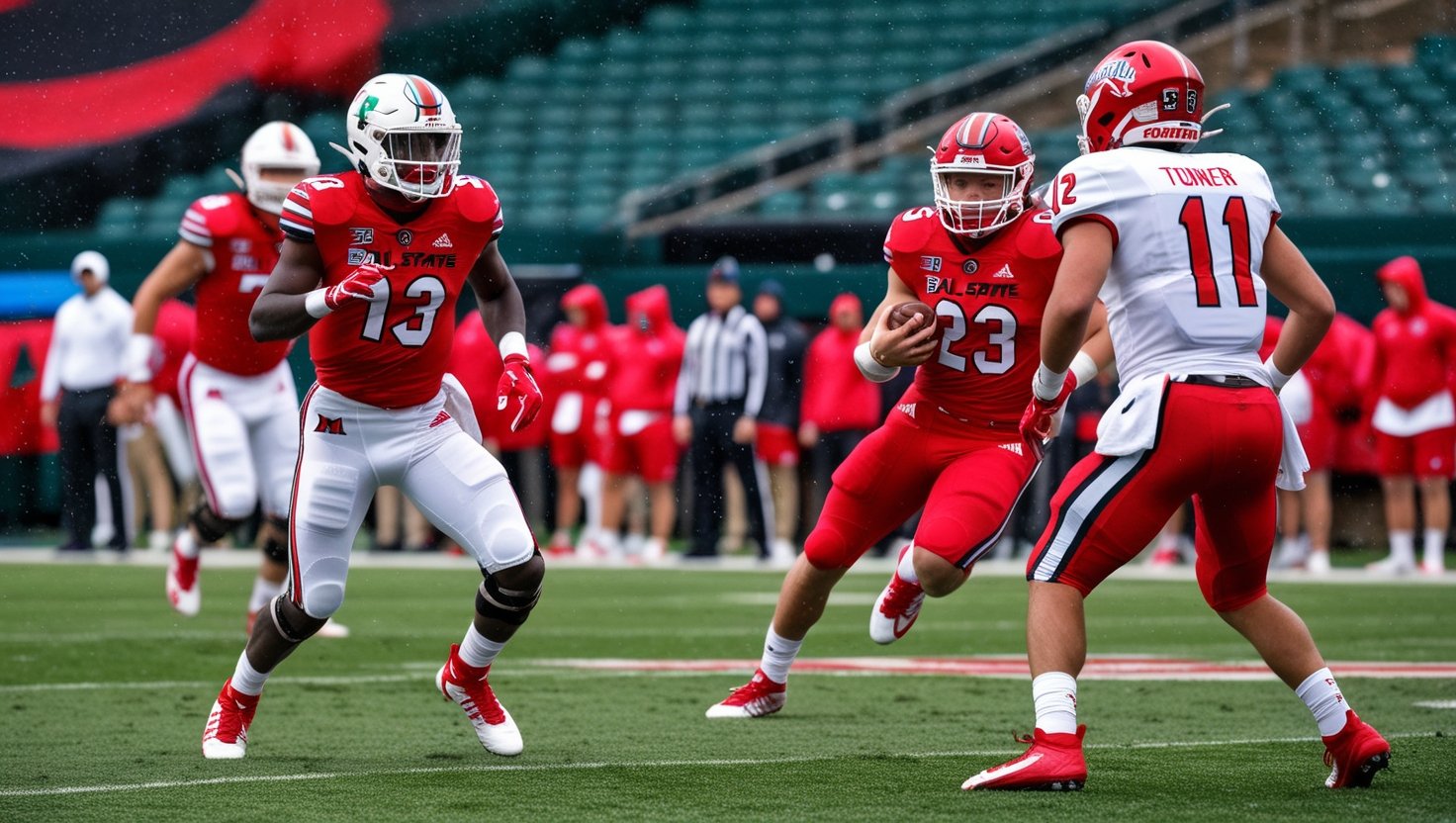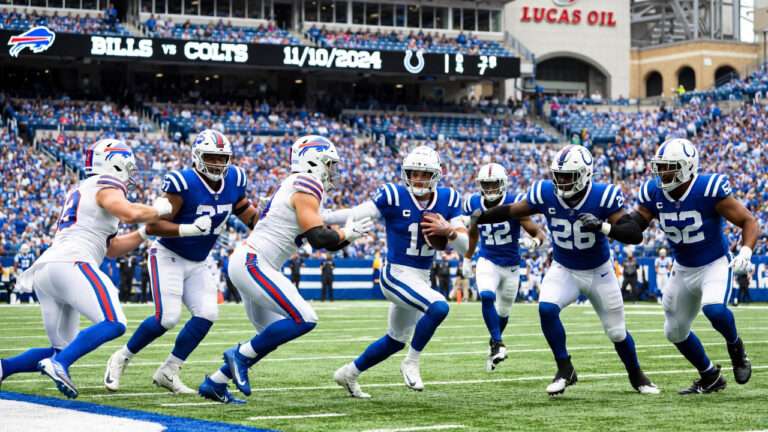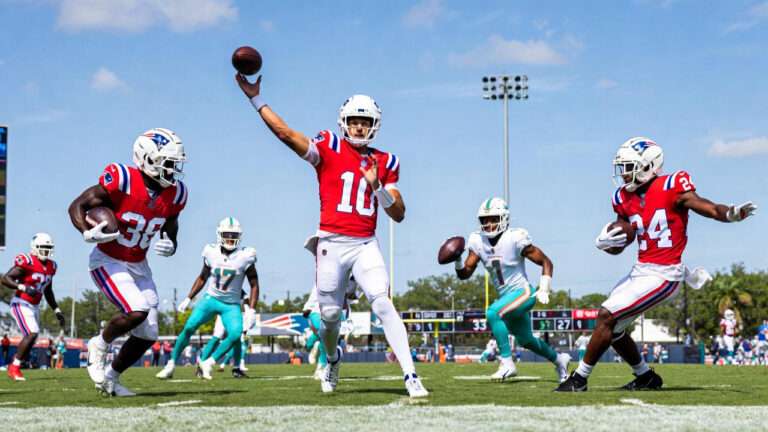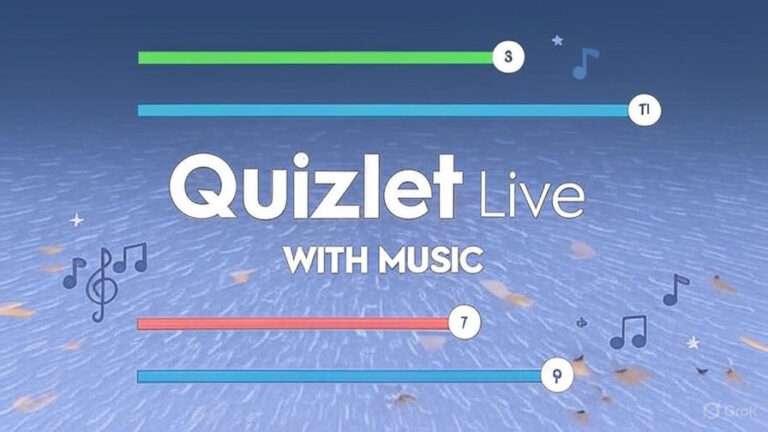
Miami RedHawks vs Ball State Cardinals Player Stats
Introduction
On November 5, 2024, the Miami RedHawks and Ball State Cardinals delivered a thrilling Mid-American Conference (MAC) showdown at Scheumann Stadium in Muncie, Indiana. This game was a testament to the intensity and unpredictability of college football, with both teams showcasing their strengths and battling through challenging weather conditions.
The RedHawks emerged victorious with a 27-21 scoreline, thanks to a balanced offensive attack and critical defensive plays. In this comprehensive article, we dive into the Miami RedHawks vs Ball State Cardinals Player Stats, key moments, and team performances that defined this exciting matchup, offering fans a detailed look at how the game unfolded.
Game Overview
The Miami RedHawks entered the game with a 4-4 overall record and a 3-1 standing in the MAC, positioning them as contenders for the conference title. Conversely, the Ball State Cardinals, with a 3-6 overall record and 2-3 in conference play, were looking to upset the preseason MAC favorites and keep their bowl hopes alive. Played under cool, rainy conditions typical of November in the Midwest, the game tested both teams’ adaptability. The RedHawks’ ability to execute in crucial moments ultimately secured their victory, while Ball State’s resilience kept the game competitive until the final whistle.
Miami RedHawks vs Ball State Cardinals Player Stats Miami RedHawks Performance
Offensive Breakdown
The RedHawks’ offense was a well-oiled machine, led by quarterback Brett Gabbert. He completed 16 of 32 passes for 219 yards, throwing three touchdowns without a single interception. His performance was pivotal, as he connected with multiple receivers to keep drives alive. For instance, Gabbert’s 34-yard touchdown pass to Reggie Virgil in the first quarter tied the game after an early deficit, showcasing his composure under pressure.
In the rushing department, Keyon Mozee was the standout, carrying the ball 22 times for 105 yards, averaging 4.8 yards per carry. Although he didn’t score, his consistent gains helped Miami control the clock and set up scoring opportunities. Gabbert also contributed 14 yards on three carries, while the team totaled 114 rushing yards on 29 attempts, averaging 3.9 yards per carry. This balanced approach kept Ball State’s defense guessing throughout the game.
The receiving corps was equally impressive. Reggie Virgil led with five receptions for 101 yards, including a 34-yard touchdown and a 41-yard catch that set up a crucial field goal in the fourth quarter. Javon Tracy hauled in six passes for 85 yards and a 10-yard touchdown, proving to be a reliable target. Kevin Davis added three receptions for 12 yards, including a 12-yard touchdown catch in the second quarter. Collectively, Miami’s receivers amassed 219 yards and three touchdowns, matching Gabbert’s passing output.
| Miami RedHawks Offensive Stats | Player | Stats |
|---|---|---|
| Passing | Brett Gabbert | 16/32, 219 yards, 3 TD, 0 INT |
| Rushing | Keyon Mozee | 22 carries, 105 yards, 4.8 AVG |
| Receiving | Reggie Virgil | 5 receptions, 101 yards, 1 TD |
| Receiving | Javon Tracy | 6 receptions, 85 yards, 1 TD |
| Receiving | Kevin Davis | 3 receptions, 12 yards, 1 TD |
Defensive Breakdown
Miami’s defense was instrumental in securing the win, particularly in limiting Ball State’s rushing attack to just 51 yards on 25 carries. This forced the Cardinals to rely heavily on their passing game, which the RedHawks’ secondary disrupted with two interceptions. Raion Strader and Corban Hondru each picked off a pass from Ball State’s quarterback, halting potential scoring drives.
Linebacker Corey Suttle led the team with nine total tackles, including one sack and 1.5 tackles for loss (TFL). Safety Grant Lyons contributed eight tackles, providing stability in the secondary. The defense recorded four sacks, with Brian Ugwu adding two, which pressured Ball State’s quarterback into making mistakes. Overall, Miami’s 60 total tackles and seven TFLs showcased their physicality and discipline.
| Miami RedHawks Defensive Stats | Player | Stats |
|---|---|---|
| Tackles | Corey Suttle | 9 total, 4 solo, 1 sack, 1.5 TFL |
| Tackles | Grant Lyons | 8 total, 5 solo |
| Interceptions | Raion Strader | 1 INT |
| Interceptions | Corban Hondru | 1 INT, 32-yard return |
Special Teams Breakdown
Kicker Dom Dzioban was a game-changer, successfully converting both of his field goal attempts from 28 and 39 yards in the fourth quarter. These kicks gave Miami a 27-21 lead that held until the end. The special teams unit also performed well in coverage, limiting Ball State’s return opportunities. Kevin Davis contributed 23 yards on kick returns, adding to his offensive output.
Ball State Cardinals Performance
Offensive Breakdown
Ball State’s offense relied heavily on quarterback Kadin Semonza, who completed 23 of 36 passes for 280 yards and one touchdown. However, his two interceptions, one returned for a touchdown, were critical mistakes. Semonza’s highlight was a 55-yard touchdown pass to Justin Bowick in the third quarter, which tied the game at 21-21 after a successful two-point conversion.
Justin Bowick was the standout performer, catching eight passes for 171 yards and a touchdown. His ability to make big plays kept Ball State in the game, particularly during their third-quarter comeback. Other receivers, such as Tanner Koziol (49 yards) and Cam Pickett (18 yards), contributed modestly, but none matched Bowick’s impact.
The rushing game was a weak point, with Ball State managing only 51 yards on 25 carries. Vaughn Pemberton led with 21 yards, followed by Braedon Sloan (16 yards) and Kiael Kelly (13 yards). Semonza himself lost 20 yards due to sacks, further hampering the ground game. This lack of balance made Ball State’s offense predictable, allowing Miami’s defense to focus on pass coverage.
| Ball State Cardinals Offensive Stats | Player | Stats |
|---|---|---|
| Passing | Kadin Semonza | 23/36, 280 yards, 1 TD, 2 INT |
| Receiving | Justin Bowick | 8 receptions, 171 yards, 1 TD |
| Rushing | Vaughn Pemberton | 21 yards |
| Rushing | Braedon Sloan | 16 yards |
Defensive Breakdown
The Cardinals’ defense recorded 60 total tackles and four sacks, showing resilience despite the loss. Linebacker Brandon Berger made a significant impact early, intercepting a pass and returning it 46 yards for a touchdown, giving Ball State a 7-0 lead. However, the defense struggled to contain Miami’s passing game, allowing 219 yards and three touchdowns. They also failed to stop Keyon Mozee’s consistent rushing gains, which helped Miami control the game’s tempo.
Special Teams Breakdown
Kicker Jackson Courville was perfect, making field goals from 27 and 21 yards, contributing six points. However, the special teams unit didn’t produce any game-changing plays, with limited impact on returns. Malcolm Gillie returned kicks for 37 yards, but Ball State couldn’t capitalize on field position.
Key Moments That Shaped the Game
First Quarter
The game started with a bang when Ball State’s Brandon Berger intercepted a pass from Brett Gabbert and returned it 46 yards for a touchdown, giving the Cardinals a 7-0 lead. Miami responded quickly, with Gabbert finding Reggie Virgil for a 34-yard touchdown pass, tying the score at 7-7. Both teams showcased their defensive prowess, with Miami’s Raion Strader intercepting a pass from Kadin Semonza to halt a Ball State drive.
Second Quarter
Ball State took a 10-7 lead with a 27-yard field goal by Jackson Courville. Miami answered with a 12-yard touchdown pass from Gabbert to Kevin Davis, regaining the lead at 14-10. Courville added another field goal (21 yards) to make it 14-13, but Miami closed the half strong with a 10-yard touchdown pass from Gabbert to Javon Tracy, leading 21-13 at halftime.
Third Quarter
Ball State mounted a comeback, with Semonza connecting with Justin Bowick for a 55-yard touchdown pass. A successful two-point conversion by Cam Pickett tied the game at 21-21. Miami’s defense tightened, however, with Corban Hondru intercepting a pass and returning it 32 yards, setting up a scoring opportunity.
Fourth Quarter
Miami regained the lead with a 28-yard field goal by Dom Dzioban, making it 24-21. As the clock wound down, Dzioban added a 39-yard field goal, extending the lead to 27-21. Ball State’s final drive ended with an incomplete pass on fourth-and-18, sealing Miami’s victory.
Player Spotlights
- Brett Gabbert (Miami OH): Gabbert’s 219 yards and three touchdowns were crucial, showcasing his leadership and precision. His ability to avoid turnovers after an early interception was a game-changer.
- Reggie Virgil (Miami OH): Virgil’s 101 receiving yards, including a 34-yard touchdown, made him a constant threat. His 41-yard catch in the fourth quarter was pivotal.
- Javon Tracy (Miami OH): Tracy’s six receptions for 85 yards and a touchdown provided reliability, especially on the 10-yard score that secured the halftime lead.
- Kadin Semonza (Ball State): Despite two interceptions, Semonza’s 280 passing yards kept Ball State competitive. His 55-yard touchdown pass to Bowick was a highlight.
- Justin Bowick (Ball State): Bowick’s 171 receiving yards and a touchdown were career highs, making him the focal point of Ball State’s offense.
- Brandon Berger (Ball State): Berger’s interception return for a touchdown gave Ball State early momentum, though the defense couldn’t sustain it.
Miami RedHawks vs Ball State Cardinals Player Stats
Based on available data, here are the inferred team statistics:
- Total Offense: Miami gained 333 yards (219 passing, 114 rushing), while Ball State had 331 yards (280 passing, 51 rushing).
- Third-Down Conversions: Miami converted 5 of 13 attempts, while Ball State managed 4 of 14.
- Time of Possession: Miami held the ball for approximately 31 minutes, compared to Ball State’s 29 minutes.
- Turnovers: Miami had one interception, while Ball State had two, significantly impacting the game’s outcome.
| Team Stats Comparison | Miami RedHawks | Ball State Cardinals |
|---|---|---|
| Total Yards | 333 | 331 |
| Passing Yards | 219 | 280 |
| Rushing Yards | 114 | 51 |
| Third-Down Conversions | 5/13 | 4/14 |
| Turnovers | 1 INT | 2 INT |
Strategic Analysis
Miami’s strategy focused on a balanced offensive approach, combining Gabbert’s passing with Mozee’s rushing to keep Ball State’s defense off balance. Their defense was aggressive, recording four sacks and two interceptions, which disrupted Ball State’s rhythm. The RedHawks’ ability to convert field goals in the fourth quarter was a testament to their composure in high-pressure situations.
Ball State, on the other hand, relied heavily on their passing game, with Semonza and Bowick forming a dynamic duo. However, their inability to establish a running game limited their offensive options, making them predictable. The Cardinals’ defense showed flashes of brilliance, particularly with Berger’s interception return, but struggled to stop Miami’s key plays in the second half.
Impact on the Season
For Miami, this victory improved their record to 5-4 overall and 4-1 in the MAC, keeping them in contention for the conference championship. The RedHawks’ balanced performance suggests they are a formidable team as the season progresses, with a strong chance of securing a bowl berth. For Ball State, the loss dropped them to 3-6 overall and 2-3 in conference play, making a bowl game unlikely. However, standout performances from players like Bowick provide hope for future seasons.
Conclusion
The Miami RedHawks vs Ball State Cardinals game was a showcase of competitive college football, with both teams displaying resilience and skill. Miami’s balanced offense, led by Brett Gabbert’s passing and Keyon Mozee’s rushing, combined with a stout defense, secured a hard-fought 27-21 victory. Ball State’s passing game, driven by Kadin Semonza and Justin Bowick, kept them in contention, but turnovers and a weak rushing attack proved their downfall. This game highlighted the importance of execution in critical moments and the impact of individual performances. As the season continues, Miami looks poised for a strong finish, while Ball State aims to build on their offensive potential.





